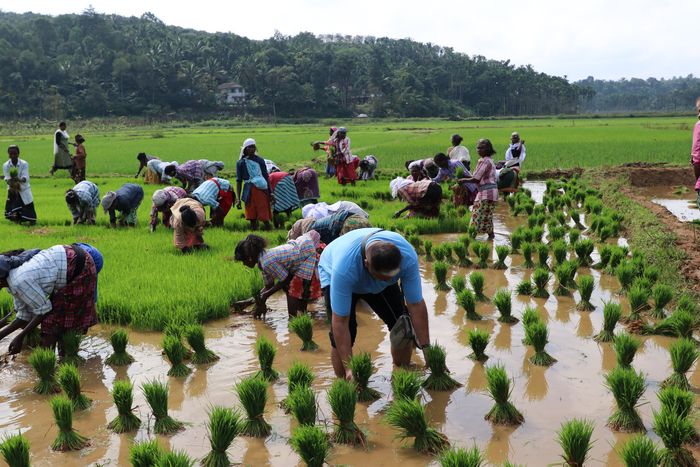The world is experiencing an unprecedented disruption caused by the Covid-19 pandemic. The Confederation of Indian Industry (CII) predicts that the entire value chain linked to travel and tourism is likely to lose around five trillion Indian rupees (EUR 58,6 billion), with the organized sector alone likely to lose EUR 18 billion. They do recognize that about 70 percent of tourism belongs to the unorganized, informal sector. The current Covid-19 crisis exposes the weaknesses of the much hyped tourism sector.
For now, signs of the downturn are everywhere. Hotels are closed, beaches are empty, and very few restaurants are able to remain open, providing take-away and delivery services. “Reservations have been cancelled for March, April and May since the start of lockdown and over the next few months most operators in the industry will be working with zero revenue. At the same time salaries, electricity, water, maintenance and other fixed costs remain. Properties require extensive maintenance to get back into working condition. Successful recovery of the tourism industry will only occur with substantial support from industry associations, state governments and the central government”, says a resort manager from Varkala, a famous tourism destination in Kerala, South India. The situation is the same in almost all tourism destinations.
“We have no tourists and no other income opportunities. We are completely dependent upon tourism and do not have the capital to invest in finding out alternatives”, says Deepak Gupta, a representative of the street vendors association from Bodhgaya, a famous Buddhist pilgrimage place. Tourism as an alternative to traditional livelihoods makes communities more vulnerable during the crisis.
But unlike conventional tourism enterprises, community tourism is more resilient. It is a niche category of tourism which is community-owned, decentralised, more sustainable, and small in nature. “We consider tourism as a secondary income along with our agricultural income. The tourism we promote is not capital intensive and is keeping our rural identity. Our investment is very minimal in terms of creating infrastructure. We use existing infrastructure like home stays'', says Mallika Virdhi of Munsiari, a Himalayan village in Uttarakhand. There were no travellers for the last three months due to Covid-19, but a contingency fund of five percent of the total income from tourism helps her community during this crisis. “We are not asking for a bailout package from the government, rather we are asking them to recognise our significant role in tourism”, says Rekha, another home stay owner from Munsiari. She is sure that what works during this crisis will also work in the future.
“We lost our income from tourism in March, April and May, but we are not under pressure. We are now in the monsoon season, busy with a few of our agricultural activities. We have postponed the planting of rice seedlings by one month to avoid losing another harvest in case of flooding”, say Jayesh and Sindhu, a farmer couple from Wayanad, Kerala. For two years in a row, their district had suffered from severe monsoon flooding. In 2018 and 2019, home stay tourism helped some of the farmers cover losses in agriculture. Now they have adapted their agricultural calendar to reduce the risks.
The future in our hands
Apart from its adverse impact, the Covid-19 crisis is an opportunity to critically examine the resilience of tourism as a development model. The increasing role of states in tourism through bailing out and other measures should be an opportunity to formulate new conditions for state help, such as following stringent conditions regarding carbon footprint, community participation, community benefits and better destination management systems. Governments should impose certain guidelines based on best practices as conditions for aid. The practices and learning’s of many community-based tourism projects need to be incorporated in future plans and policies.
Experience shows that ideal resilient destinations are those that effectively respond to crises and recover quickly. They are those that adopt policies that acknowledge current and future risks. This also includes creating the decentralisation of powers in taking decisions and managing tourism. Some of the experiences of community based tourism show that these initiatives make communities more resilient than conventional tourism models.
We need to analyse post Covid-19 global tourism in the context of over tourism, global financial crisis, climate change, and other upheavals. Such an analysis may give an insight into other aspects of resilience such as the industry’s marginal profitability and liquidity, over capacity and supply, subsidies, tax incentives, market deregulation, and the development of a disruptive platform economy.
Fundamental changes and paradigm shifts towards more sustainable tourism can reduce the gravity of a crisis like Covid-19 and also increase the resilience of the sector. Social distancing could be a good occasion to end the mass tourism paradigm. Covid-19 presents an opportunity for a more quality-based tourism, rather than quantity oriented.
Joyatri Ray is the director of Equitable Tourism Options (Equations), a research, campaign, and advocacy organisation working on tourism and development issues in India.
K.T. Suresh has worked for 20 years at Equations in various capacities and is currently their secretary.
Sumesh Mangalasseri is a founder of Kabani – the other direction and Kabani Community Tourism and Services, an NGO and a social enterprise facilitating community-based tourism in India. He is also associated with Equations in various programmes, such as developing a network of community-based tourism organisations.


